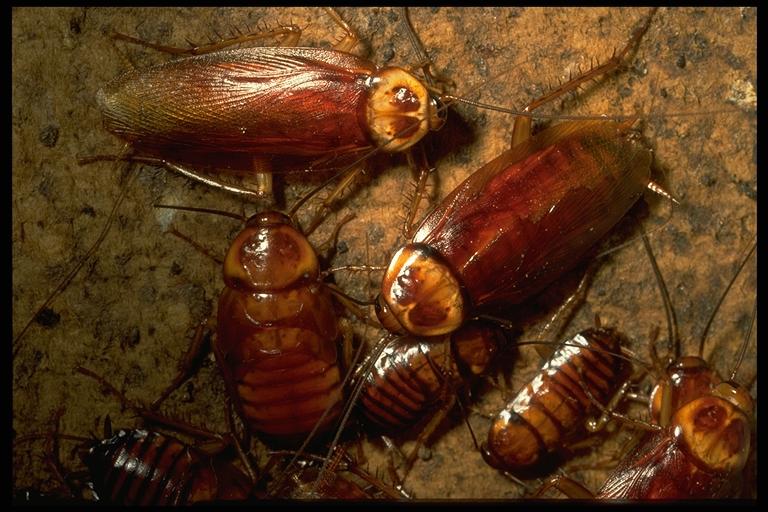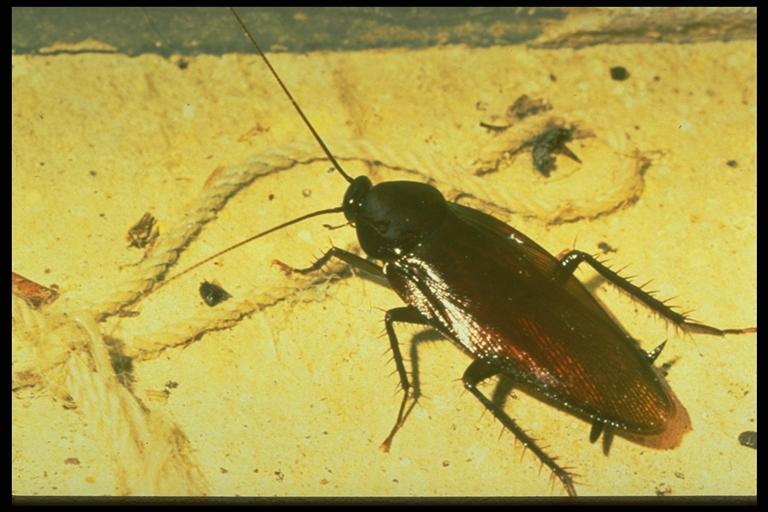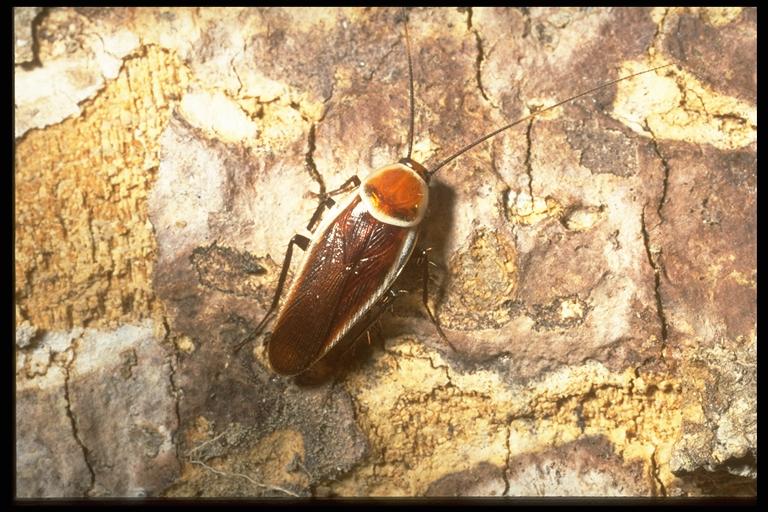
American cockroach, Periplaneta americana Linnaeus (Blattodea: Blattidae), adults and nymphs. Photo by Drees.
Common name: American cockroach
Scientific name: Periplaneta americana Linnaeus
Order: Blattodea
Description: This is one of the largest common cockroaches in Texas, reaching 1-1/2 to 2 inches. They are reddish-brown in color. The shield portion behind the head (prothorax) has a margin of light brown or yellow.
Another similarly-sized, black-brown, common indoor species is the oriental cockroach, Blatta orientalis Linnaeus, but it differs because the wings on adults are rudimentary on the female and only cover 75% of the abdomen of the male. Other cockroach species come in a variety of sizes and shapes. Most are dark brown with or without color patterns on the body. Occasionally, a whitish cockroach is observed incorrectly thought to be an “albino” form. These are, in fact, roaches that have just molted and have not yet had time to darken their “new” exoskeleton.
There is, however, a pale green cockroach species, the Cuban cockroach, Panchlora nivea (Linnaeus) (Blattodea:Blaberidae), that is occasionally encountered in the Houston area. Other common outdoor species include wood roaches, Parcoblatta spp. (Blatellidae) and the pale-bordered field cockroach, Pseudomops septentrionalis Hebard (Blattaria: Blattellidae).

Smokeybrown cockroach, Periplaneta fuliginosa (Serville) (Blattaria: Blattidae). Photo by M. E. Merchant.
Life Cycle: Simple metamorphosis (egg, nymph, adult). Female cockroaches glue or drop 1/4 inch long bean-like egg capsules (oothecae) containing about 15 eggs on or around infested areas. Nymphs hatch from the egg case that resemble small grayish-brown adult cockroaches without fully developed wings. Nymphs molt 10 to 13 times in over a year (470 to 600 days, depending on temperature) before becoming adults.
Habitat, Food Source(s), Damage: This is generally an outdoor species, living in wood piles, decaying trees, palm trees and in sewer systems. Cockroaches have flattened bodies that allow them to enter homes through cracks around loose-fitting doors and windows, and where electric lines or pipes pass through walls. They are mainly active at night and hide in cracks and crevices during the day, preferring dark moist sites in attics and basements. Cockroaches eat almost anything including meats and grease, starchy foods, sweets, baked goods, leather, wallpaper paste, book bindings and sizing. Adults are capable of gliding flights.
Pest Status: Although not shown to be direct carriers of disease, they can contaminate food and kitchen utensils with excrement and salivary secretions and leave an unpleasant odor.

A pale-bordered field cockroach, Pseudomops sp. (Blattaria: Blatellidae). Photo by Drees
For additional information, contact your local Texas A&M AgriLife Extension Service agent or search for other state Extension offices.
Literature: Ebeling 1978; Hamman and Turney 1983.